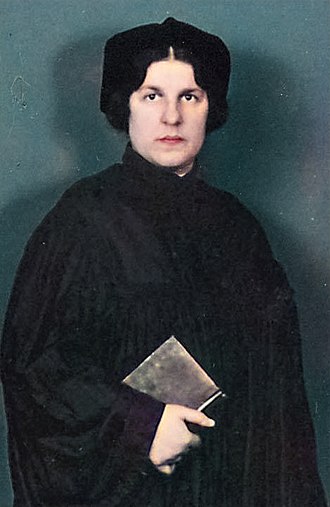There has been a long history of Rabbis in Jewish history. For the most part, the existence of women rabbis have increased through the years. However, there are still some institutions and communities that do not wholeheartedly support the change. What an interesting part in our history that’s not necessarily being talked about enough. Join us on our glatt kosher tour to learn more about some of the overlooked chapters in Jewish history. Be sure to book a kosher tour with us soon!
 Regina Jonas
Regina Jonas
In 1935, the first ever woman Rabbi was privately ordained in Germany. Regina Jonas had studied at the Academy for the Science of Judaism in the 1920s and during this time, every single Rabbi that was officially ordained were all men. In 1930, Jonas had presented her thesis entitled, “Can A Women Be a Rabbi According to Halachic Sources?.” Her research ultimately reached a positive conclusion, though it was frowned upon by some of the faculty. She was then privately ordained by Rabbi Max Dienemann of Offenbach and became a Chaplain in orphanages, hospitals, women’s prison, and several Jewish homes for the elderly.
In 1942, Regina Jonas and her mother were exiled to Czechoslovakia’s Theresienstadt concentration camp. During her time there, she worked for Viktor Frankl, a psychiatrist at that time and renowned author today. Jonas shared her sermons to the prisoners in hopes of helping them overcome their thoughts of suicide and find new meaning in their lives. In 1944, Regina Jonas was transferred to Auschwitz where she was believed to have been killed at the age of 42.
Sally Priesand
Today, American Jews are used to seeing a Woman Rabbi and the first ever ordained American female Rabbi that pioneered this progressive development was Sally Priesand. When she was still a student, she published her thesis entitled, “Judaism and the New Woman,” and emphasized the evolving role of women in our history. She was ordained by a rabbinical seminary in 1972 and has opened doors as well as contributed to the transformation of old traditions in our community.
During her time, the rise of second-wave feminism was apparent. Women were rightfully demanding for equality, crashing rabbinic assemblies, and meeting in large gatherings to pray together. Rabbi Sally was known to be working with the Reform Movement’s Central Conference of American Rabbis’ Task Force on Women in order to pave the way for all the women who followed and will plan to follow in her footsteps.
Sandy Eisenberg Sasso
Sandy Sasso is not only the first female reconstructionist rabbi in 1974, she is also the first woman to serve as rabbi with her husband, Dennis Sasso, in the same conservative congregation. Additionally, she is also the first female rabbi to become a mother when she birthed her son, David, in 1976.
Sandy Sasso is also an award-winning author that has published several successful children’s books and resources about our religion. Throughout her career as an author, she has made it her mission to transform the perspectives of adults and children on the role of women in Jewish history and tradition. At the same time, she is also very consistent when it comes to interfaith dialogue and lectures at the Christian Theological Seminary and Butler University. Overall, she has been identified as one of the many voices of feminist judaism.
